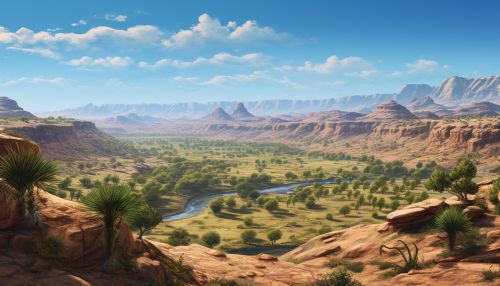Mojave people
Introduction
The Mojave are a Native American tribe indigenous to the Colorado River in the southwestern United States. This tribe, also known as the Mohave, has a rich cultural heritage and history that spans several centuries. The Mojave people are renowned for their skills in agriculture, pottery, and warfare. Their traditional territory extends from Black Canyon to the Picacho Mountains, encompassing parts of present-day Arizona, California, and Nevada.


History
The Mojave people have a long and complex history that dates back to prehistoric times. Archaeological evidence suggests that the Mojave have inhabited the Colorado River area for at least 1,000 years, possibly longer. Their history is characterized by periods of prosperity and decline, largely influenced by environmental conditions and interactions with neighboring tribes.
Prehistoric Period
The prehistoric period of the Mojave people is not well-documented due to the lack of written records. However, archaeological findings indicate that the Mojave were part of the Patayan culture, a prehistoric complex society that thrived in the southwestern United States and northwestern Mexico. The Mojave people, like other Patayan groups, were hunter-gatherers who also practiced rudimentary agriculture.
Contact with Europeans
The first recorded contact between the Mojave people and Europeans occurred in the 16th century when Spanish explorers arrived in the region. The Mojave initially traded with the Spanish, exchanging crops and pottery for European goods. However, relations between the two groups deteriorated due to cultural misunderstandings and the Spanish desire for control over indigenous lands.
American Period
The American period began in the mid-19th century when the United States acquired the southwestern territories from Mexico. This period was marked by significant changes for the Mojave people, including forced relocation to reservations and cultural assimilation efforts by the U.S. government.
Culture
The culture of the Mojave people is deeply rooted in their traditional beliefs and practices. They have a rich oral tradition, with stories and legends passed down through generations. The Mojave are also known for their artistic skills, particularly in pottery and body painting.
Religion and Beliefs
The Mojave people have a complex spiritual system that revolves around dreams. They believe that dreams are a form of spiritual communication and can provide guidance or foretell future events. The Mojave also practice a variety of rituals and ceremonies, many of which are tied to agricultural cycles.
Art and Craft
Mojave pottery is renowned for its distinctive style and quality. Traditional Mojave pottery is made from local clay and decorated with intricate geometric designs. The Mojave are also known for their body painting traditions, using natural pigments to create elaborate patterns on the skin.
Society and Economy
The Mojave people traditionally lived in small, semi-nomadic bands along the Colorado River. Their economy was based on a combination of agriculture, hunting, and gathering. The Mojave cultivated a variety of crops, including corn, beans, and squash, using irrigation systems to water their fields.
Social Structure
Mojave society was organized into matrilineal clans, with descent and inheritance traced through the mother's line. Each clan was led by a chief, who was responsible for making decisions and resolving disputes within the clan.
Trade and Commerce
The Mojave people were active traders, exchanging goods with neighboring tribes and later with European settlers. Their strategic location along the Colorado River made them an important hub in the regional trade network.
Modern Mojave
Today, many Mojave people live on reservations in Arizona and California, including the Fort Mojave Indian Reservation and the Colorado River Indian Tribes Reservation. Despite the challenges of the past, the Mojave people continue to maintain their cultural traditions and work towards preserving their heritage for future generations.
